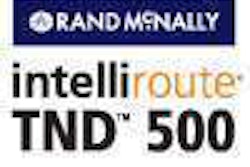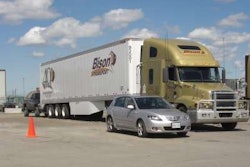Automated communications lacking with shippers, 3PLs
Many carriers use electronic data interchange (EDI) and various Internet-based technologies to automate the communications process with customers. As more shippers deploy transportation management systems (TMS) and outsource to third-party logistics firms, the level of complexity of electronic communications is increasing, says Woody Lovelace, director of corporate planning for Southeastern Freight Lines, a less-than-truckload carrier based in Columbia, S.C.
Pickups are one instance where the complexity can cause problems. For starters, many of the communication protocols in TMS originally were developed for the truckload model and still require some adjustments to work seamlessly with LTL, Lovelace says. At SEFL, 10 percent of the fleet’s pickup orders currently are received electronically. Lovelace expects this figure will grow to 20 or 25 percent next year as a result of more shippers deploying TMS and outsourcing to 3PLs.
Lovelace welcomes the increase, but the change comes with a bullet. Consider the standard EDI transaction set used to tender loads to carriers (204). Upon receipt, the carrier has a block of time to accept or reject the load. From the LTL perspective, a 204 is not a load offer but a pickup request, Lovelace says. “If a shipment is within our service area, we don’t need to tell you if we will take it or not,” he says. “We take them.”
LTL carriers usually will set up their systems to “auto-accept” 204s, or alternatively will have their customers send an electronic bill of lading (a 211) on the day a shipment is to be picked up, Lovelace says.
In some scenarios, 3PLs are sending a pickup request – either a 204 or 211 – to the carrier before the shipment is available. “We do have challenges where a pickup doesn’t match up with what we actually received,” Lovelace says.
A 3PL usually is not physically sitting with the freight. Instead, its TMS is at work behind the scenes automatically generating pickup orders for carriers when the consignees in its system make purchase orders.
In addition, 3PLs’ TMS software often generates supplemental numbers for each pickup that are not found on the physical bill of lading. To accurately submit freight bills and receive payment, carriers have to match these supplemental numbers to the physical bills they collect at pickup.
Sometimes the miscommunication between 3PLs and shippers results in carriers missing pickups altogether. Suppose the carrier receives a pickup request and dispatches a truck, but the shipment is not ready or the shipper is not expecting a pickup. Currently, the only EDI transaction used for such events is the 214, a status update. The carrier sends the first 214 when a pickup is made. If the carrier misses a pickup, no 214 is sent.
“There is not an EDI standard that says ‘We missed it,'” Lovelace says. Nor is there a standard set of reasons to describe why a shipment was missed. In the event the carrier does not send a 214, some 3PLs automatically send a spreadsheet that the carrier has to fill out. This process adds manual research and data input for the carrier.
To address these challenges, Lovelace has initiated a task force project for the Information and Technology Logistics Council of the American Trucking Associations. The task force will develop a recommended transaction set for missed pickups, including noting when the carrier was at fault.
When complete, ITLC’s task force will send its recommendations to the X12 subcommittee of the Accredited Standards Group. Lovelace anticipates that the X12 subcommittee either will modify the existing 214 transaction to add new status types for missed pickups, or will create a new EDI transaction set.
In the near future, perhaps as a direct result of Lovelace’s work, shippers and 3PLs that use EDI and other electronic processes will add “pickup compliance” to the set of carrier metrics that already include on-time service, claims-free delivery and invoice accuracy. If the measure is accurate and automated, carriers won’t mind.











